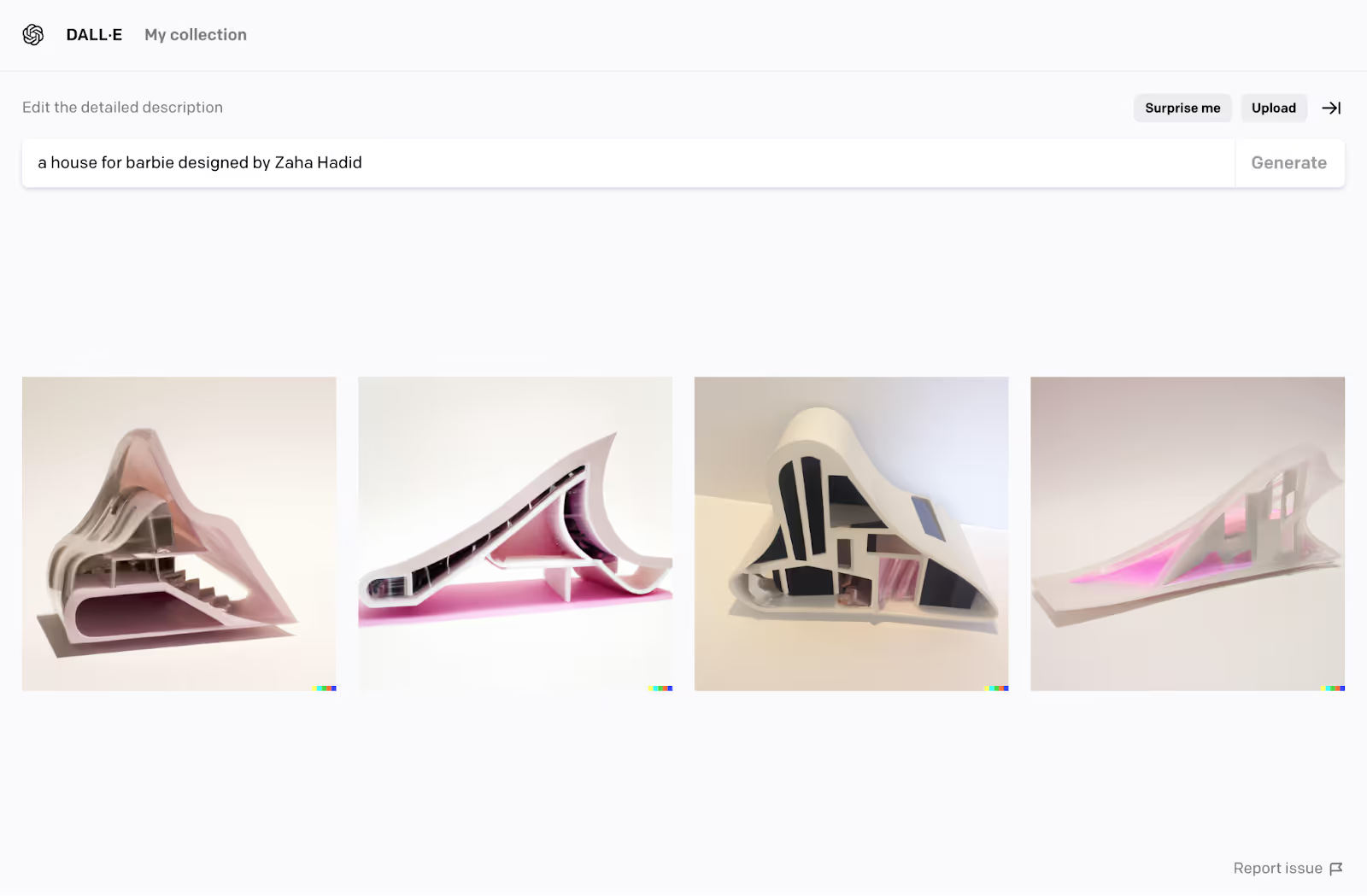Dall-E 2 : Will AI replace Architects?
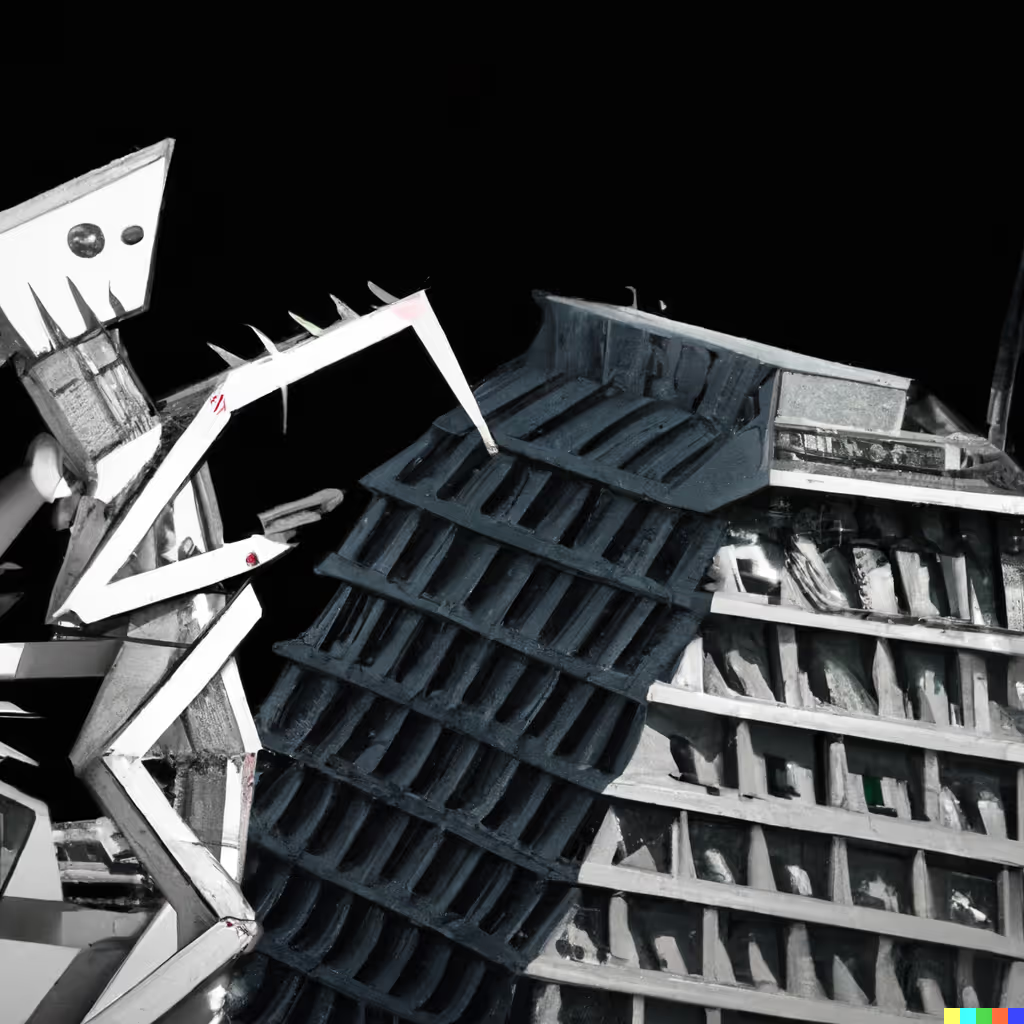
What is Dall-E?
Dall-E 2 is essentially an AI developed by an Elon Musk-backed company called OpenAI. In their own words, they are “a new AI system that can create realistic images and art from a description in natural language.”
And that’s what it does. You enter a set of keywords, and then Dall-E 2, through its almost magic AI, creates an image based on your input.
You can see in the below image our input and the image Dall-E has created.

Fun fact, it’s called Dall-E because the creators combined the names of Spanish artist Salvador Dali & Wall-E, the robot from the popular animated movie Wall-E.
Now, this has very real implications in the Architecture and Design Industry. Maybe not in the immediate future, but we’re looking at a significant change in the status quo at some point.
So let's dive right in and ask the more serious question, can an AI replace Architects?
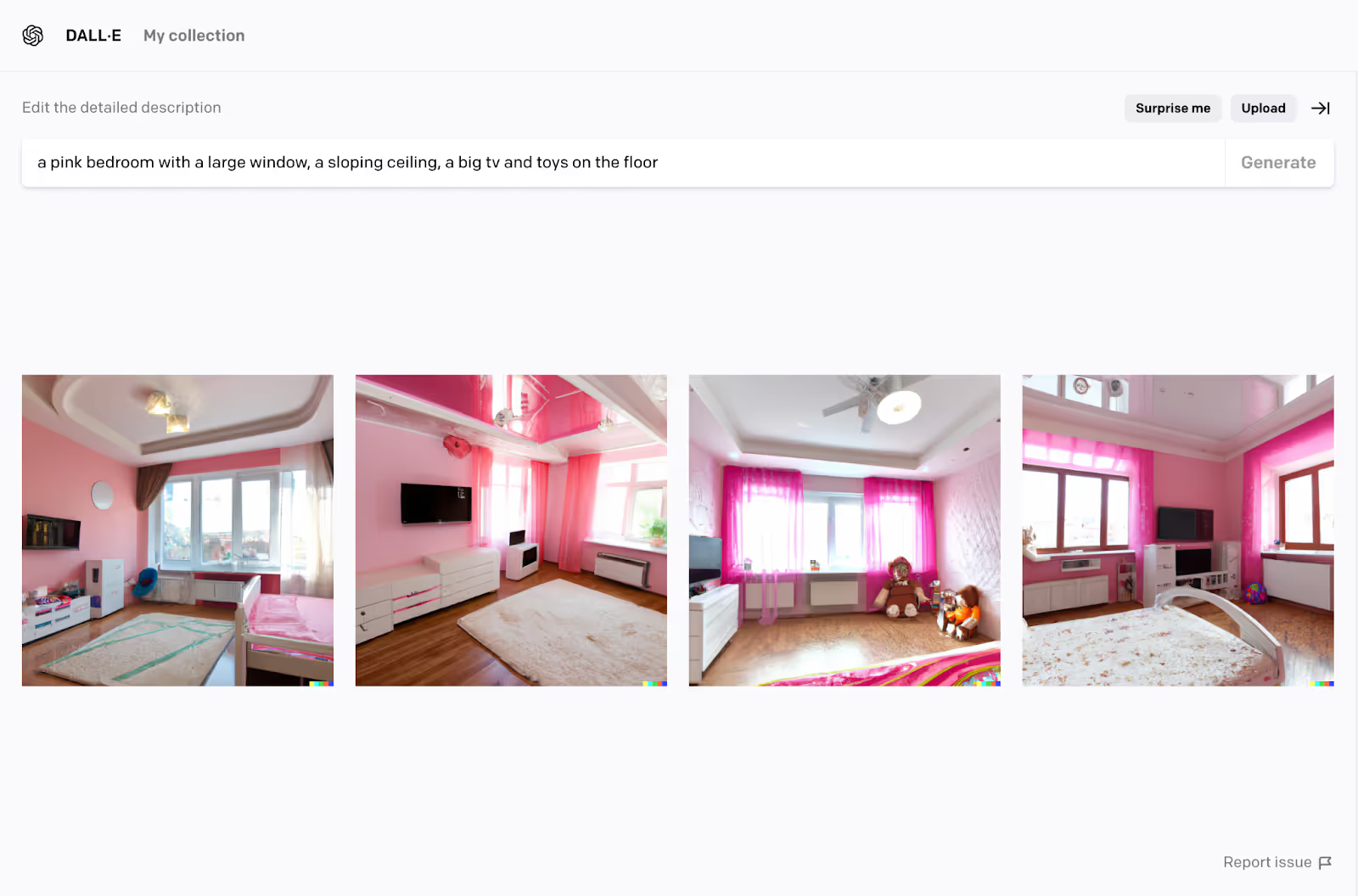
How does Dall-E work?
It’s important to note that Dall-E creates these images from nothing. These aren’t readily available images it forages through the internet to show you, but it uses something called ‘Clip and Diffusion’.
In simple terms, Dall-E’s AI Diffusion models are trained to break down images into pure noise until they’re not recognizable anymore. From there, the AI is trained further to create new images using the ‘noisy’ training images. If that sounds confusing, here’s an image explaining what the process looks like.
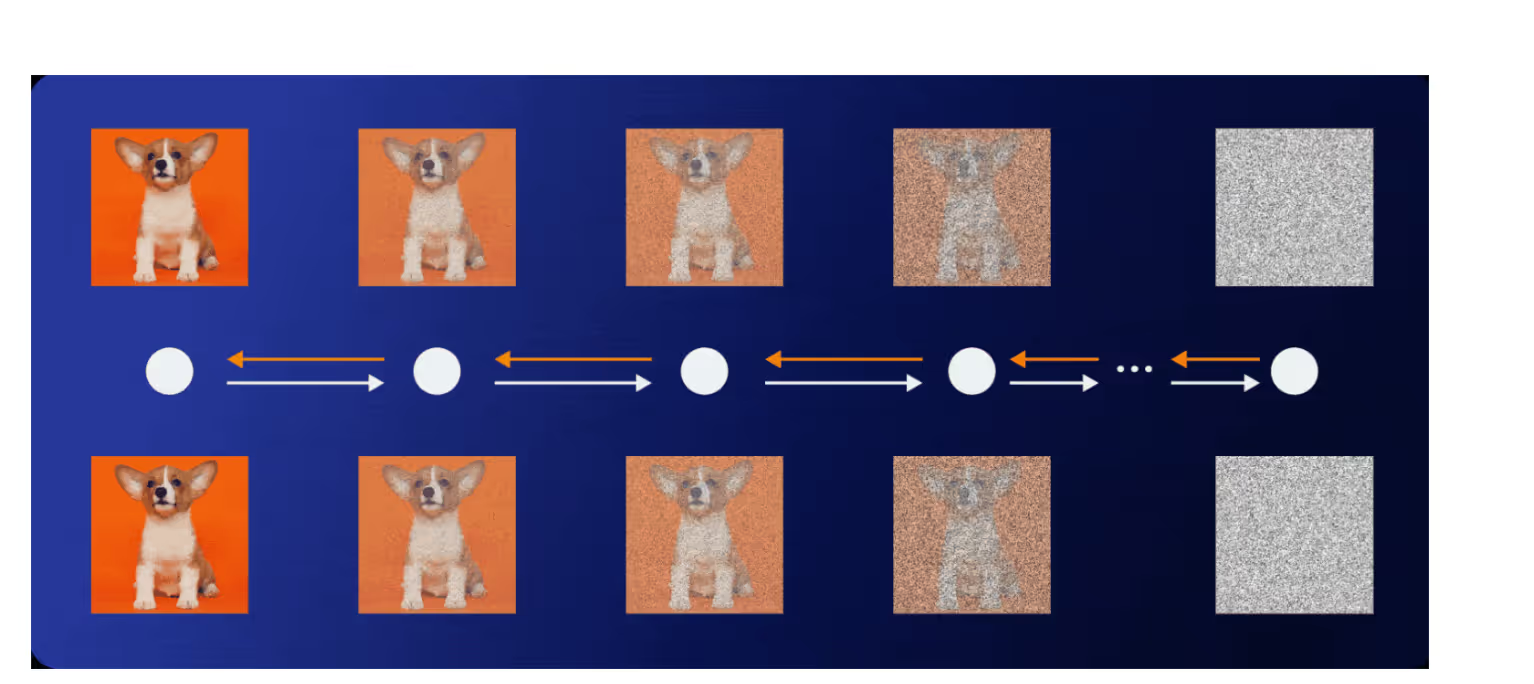
The diffusion models create these images from what a designer might think of as millions of pixels. It simply re-arranges the pixels to create images. It’s able to do this because of CLIP or Contrastive Language-Image Pre-training. CLIP is a neural network that’s trained to create text captions from existing images, the opposite of what Dall-E does. CLIP recognizes what the user is looking for from the text prompt and then attempts to assign images to it.
This is an over-simplistic explanation of a very sophisticated piece of tech. If you’re interested in learning more, we recommend Aditya Singh’s Blog on How Dall-E Works.
Who is Dall-E for?
The point of Dall-E was purely academic; to understand how AI could be trained for our benefit. OpenAI hopes that as Dall-E evolves, it can be used across all fields, including medicine, where early stages of diseases that humans often miss can be detected.

But Dall-E has found a place with artists, graphic designers, and part-time content creators. Check out this incredibly fun video by MKBHD and his team, where their in-house graphic designer competes with Dall-E on who can create the better design.
How is Dall-E useful to architects?
Architects can fully utilize Dall-E to speed up creative work, instantly present concept ideas to clients, create design variations, or even improve existing renders.
The best part about Dall-E is that you can be as specific or vague as you want. The more specific you are, the better your results will be. Dall-E can break down keywords to create realistic images around them.
There’s an advantage to being vague whenever you’re not sure what you’re looking for. Often, Architects aren’t sure about the direction they wish to take with a design. Sketching and concept design tools are great ways to explore ideas, but let’s be honest, they take time to generate compelling results.
Concept Design
Concept design is always tricky. Designers want to ensure that their vision and the client’s vision are aligned, and clients are sometimes afraid to commit to a particular direction. Here’s where Dall-E can help.
Let’s say you have a client who wants to build a beach house, but she’s unsure about its style. Pinterest doesn’t help her because the references don’t match her scale requirements. Now the Architect can simply type out her requirements on Dall-E and show her more realistic options. It’s elementary, really! We ran a similar test, and you can see the results below.
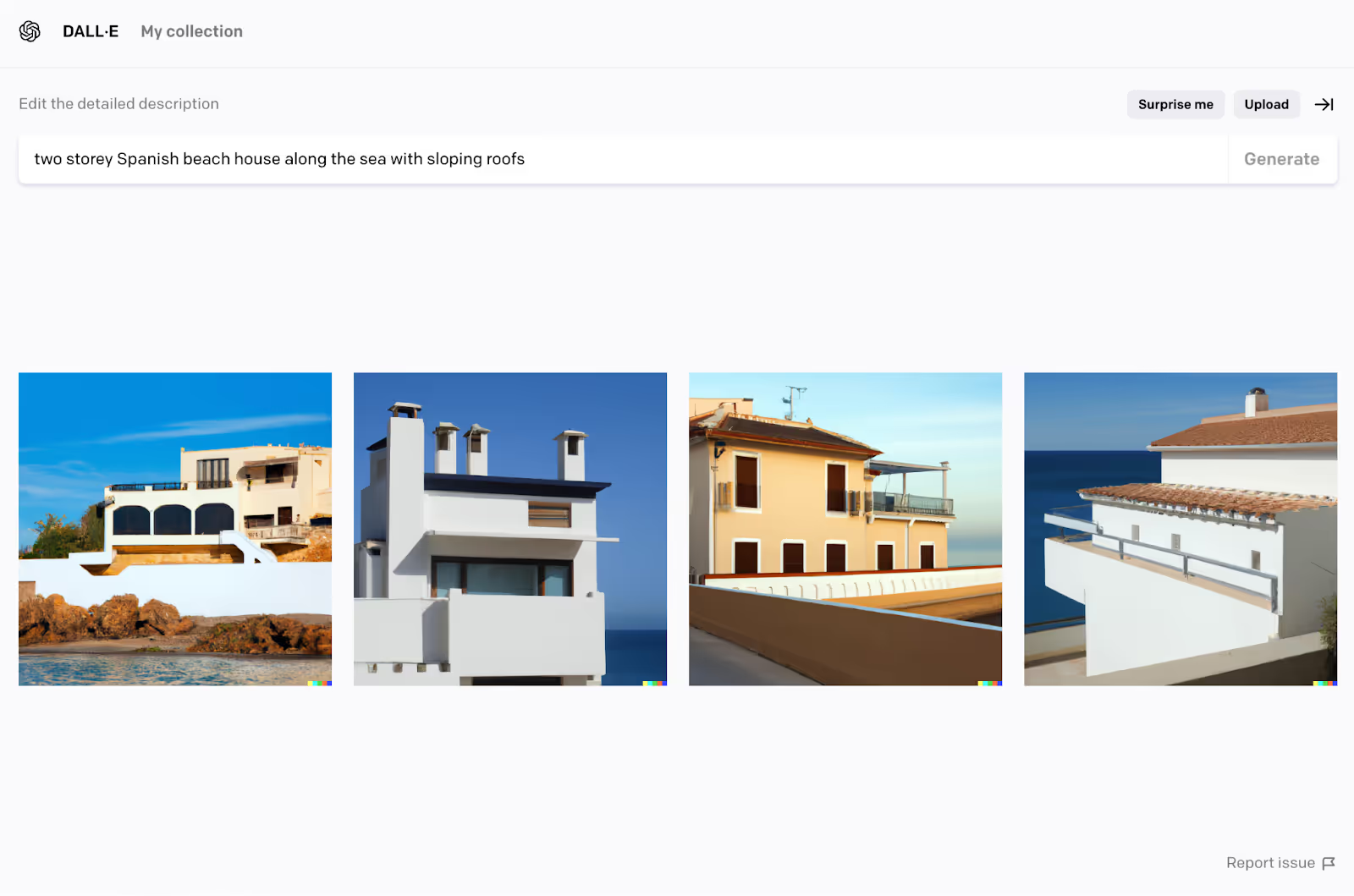
Now, let's assume that the client likes Image #3 and would like to see similar options. Dall-E can create variations of it while maintaining the original style just like how a designer would!

Let’s push this experiment further and assume she likes image #3 but cannot understand the house's scale. Humans are a great way to show scale, so you’re thinking, “Can Dall-E add humans to the image?”. Of course, it can! All you need to do is specify where and add new keywords to the existing prompt.

Your client is absolutely thrilled but is still unable to visualize how this design might look on her site. What do we do now? Simple. Open Photoshop, import the site image, match the perspectives of the two images, and use layer masks to … No, no, no! Dall-E can help.
Simply upload your images on Dall-E, type in the text prompt as you normally would, and let Dall-E do the work. You can edit the color or house style using the text prompts.
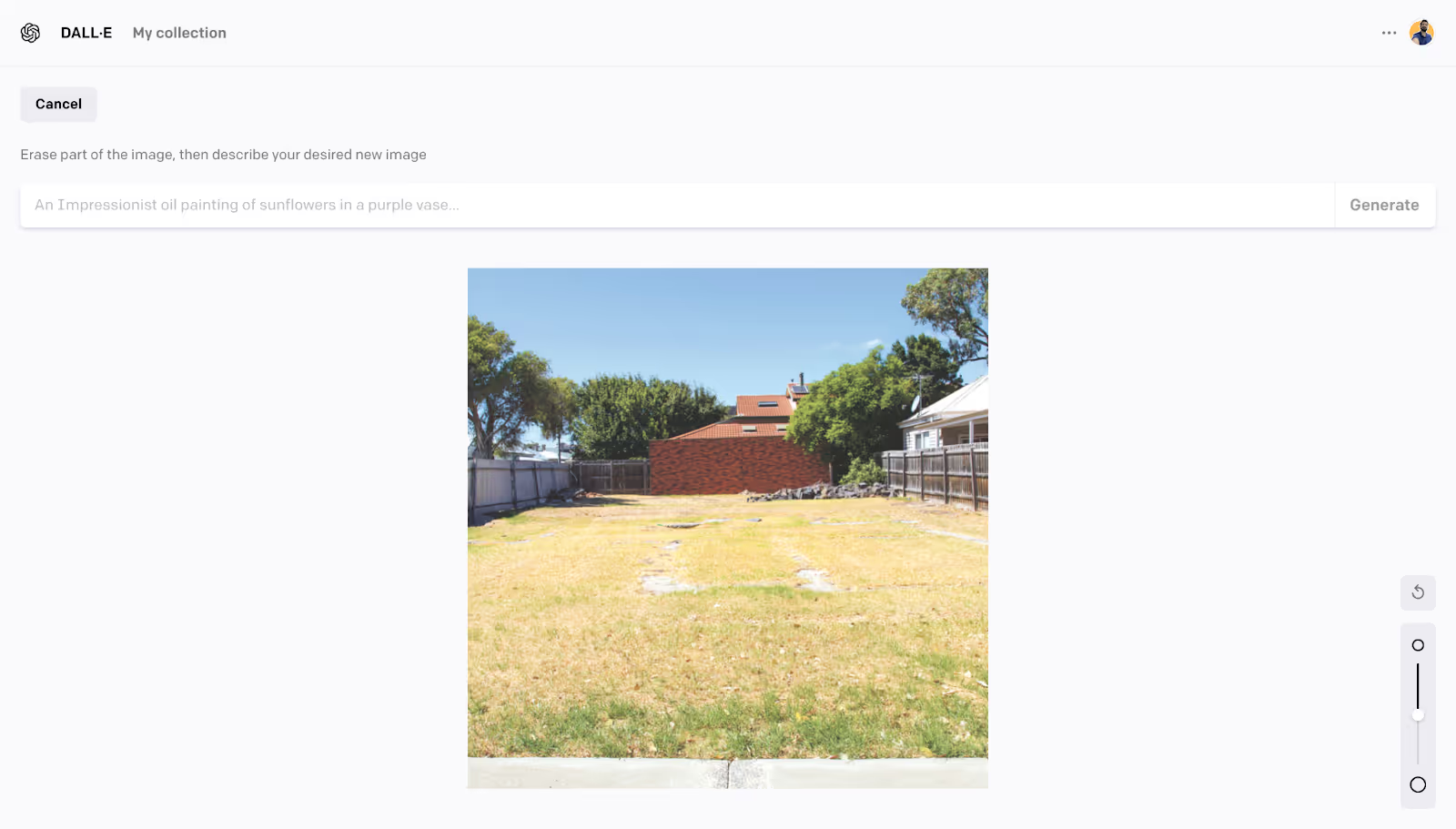
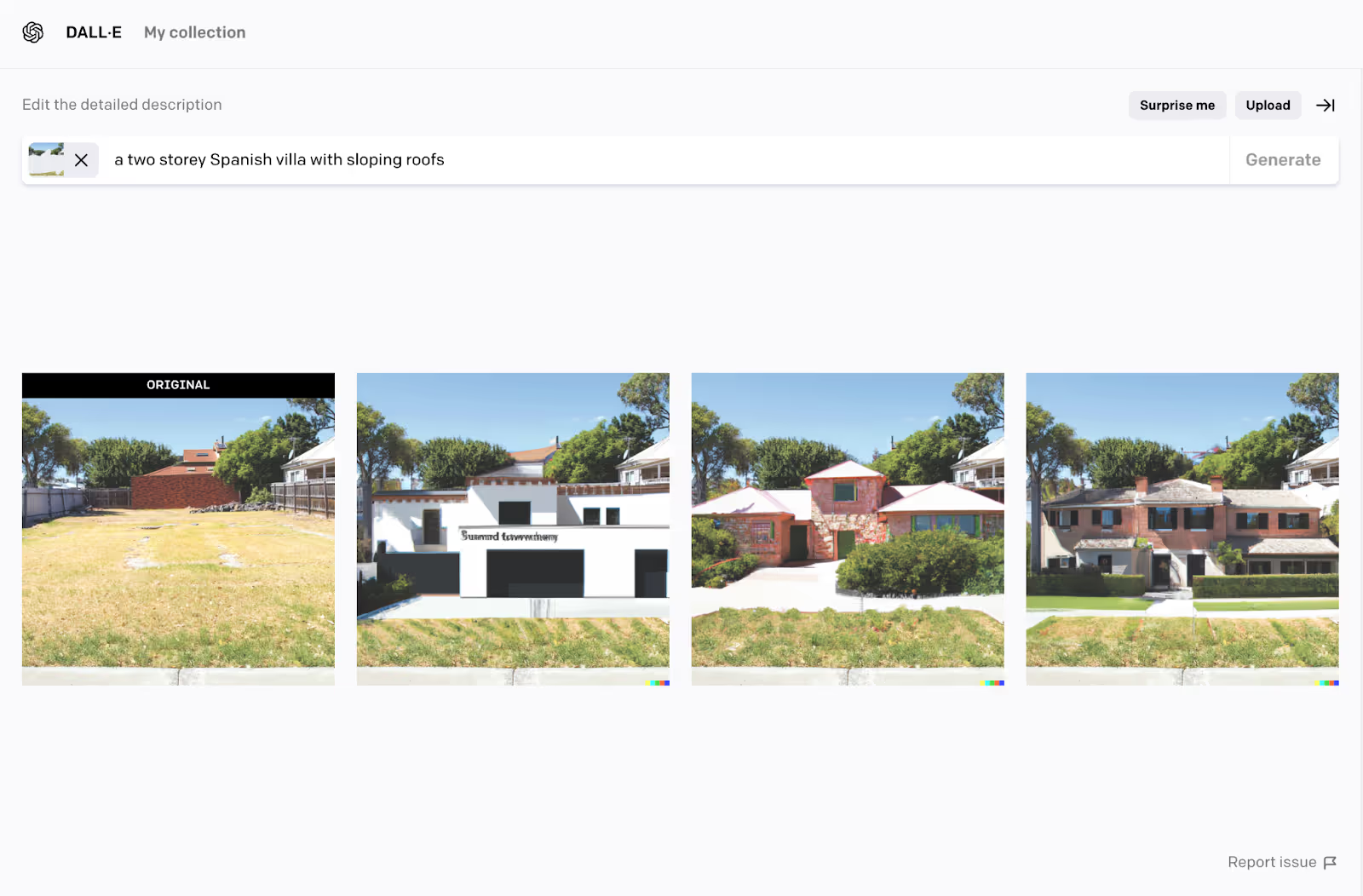
Options, Options & Options
Let’s consider another scenario where your client needs the elevation designed for his modern apartment building. He wants to see multiple options in the time it takes to make one! Can Dall-E help?
Yes! You can upload your image and click a button to generate design variations. Dall-E can understand the image and produce variations while maintaining the proportion and style. This works well with Interior Design too. You can show various design options based on the original design using Dall-E.
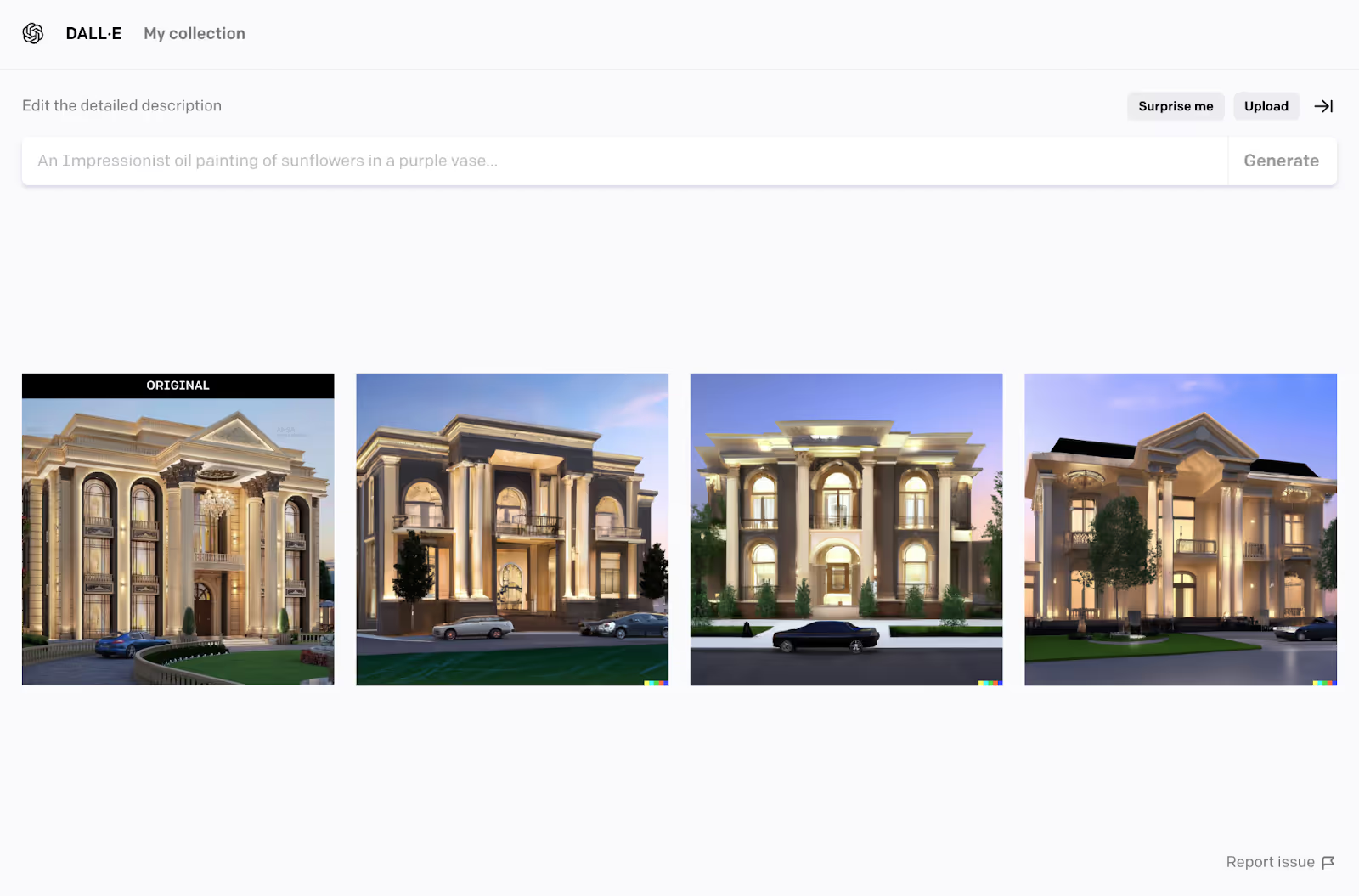
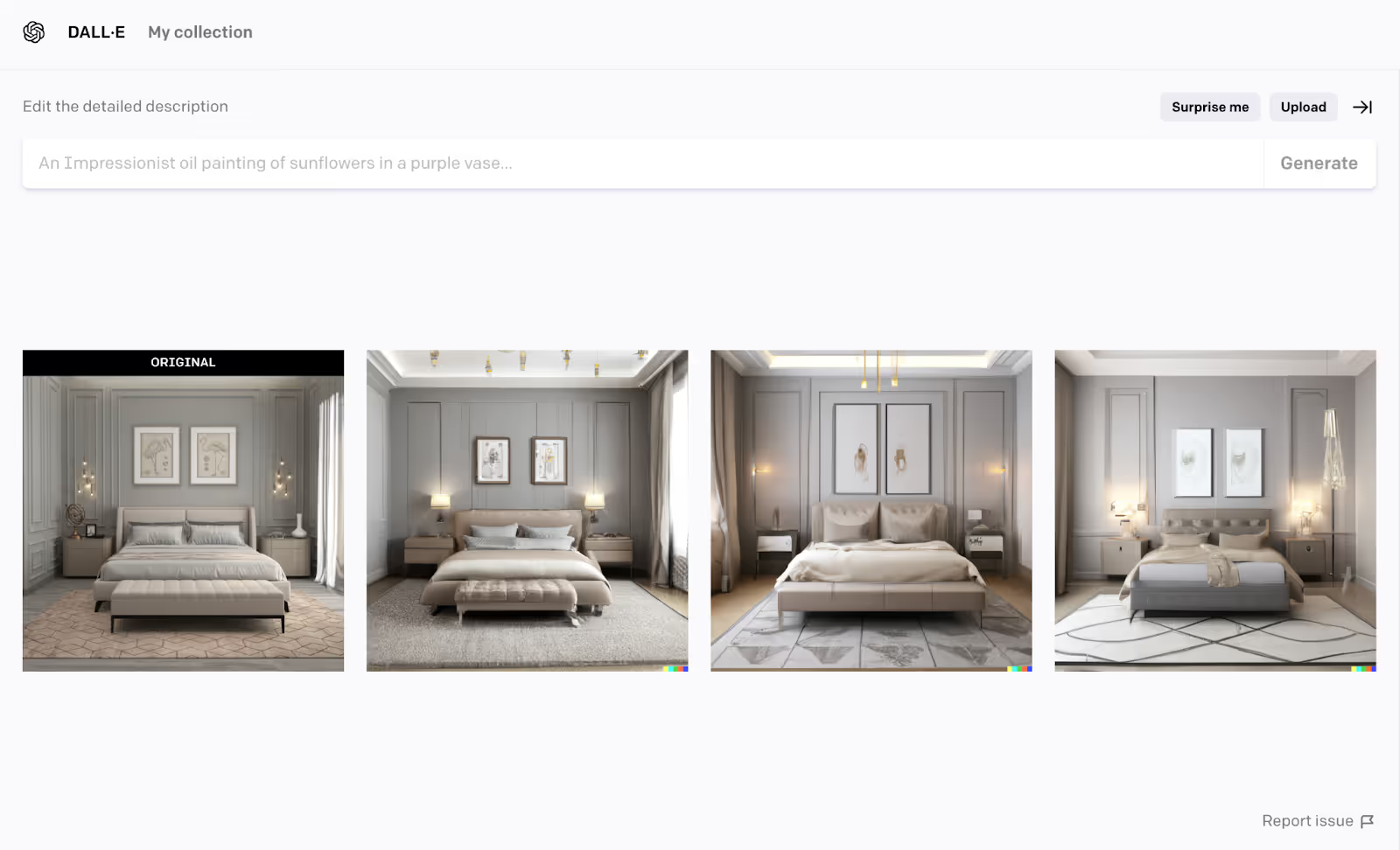
Detailed Design
Dall-E’s strengths lie in its ability to help create variations and concepts for architects and designers. So it can be a helpful tool for designers to create images for personal use quickly.
However, design detailing on Dall-E may not blow your mind. It still cannot compete with the Architect’s ability to sketch out design details on the fly, but considering it takes seconds to generate ideas, it’s still worth a shot.
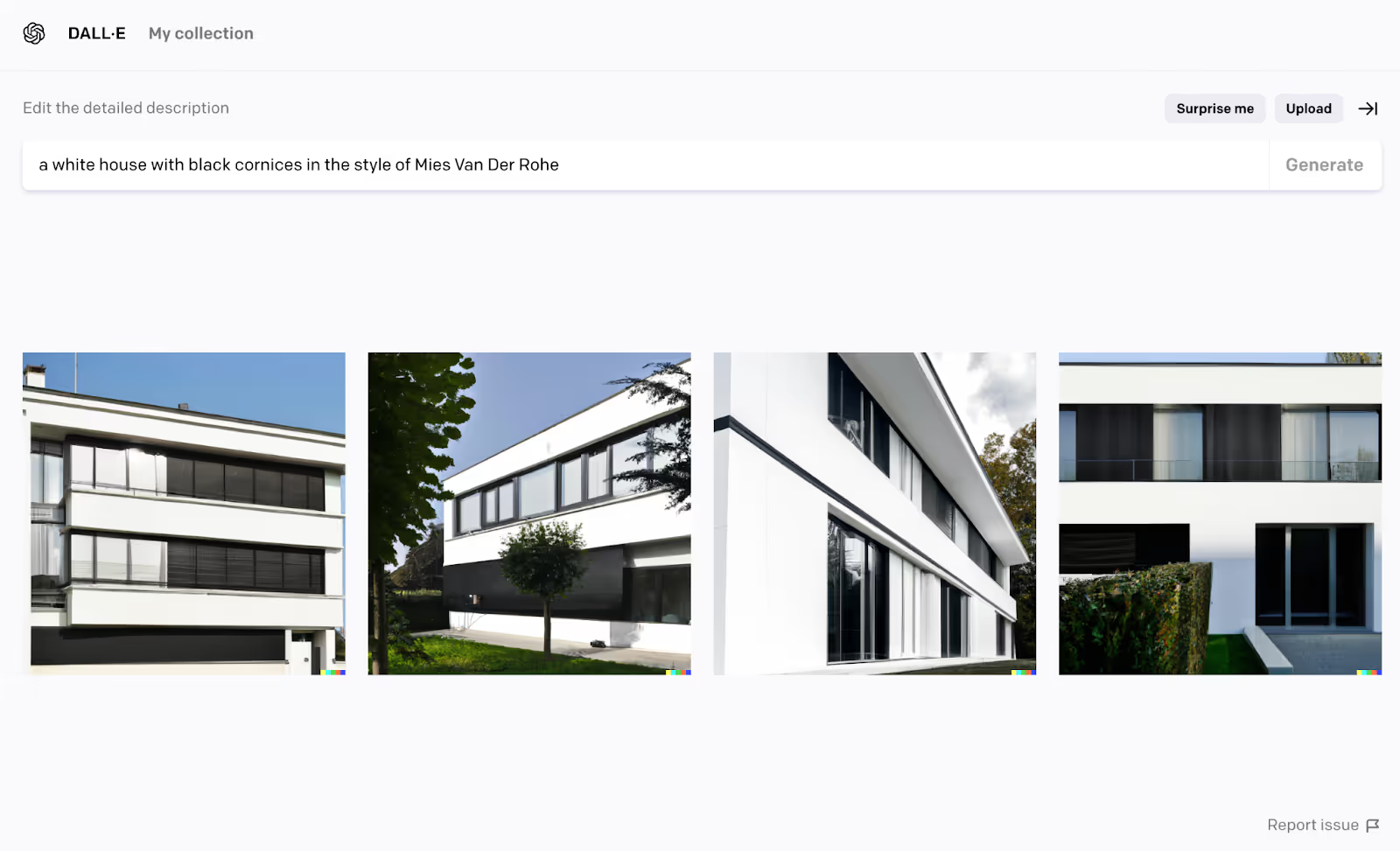
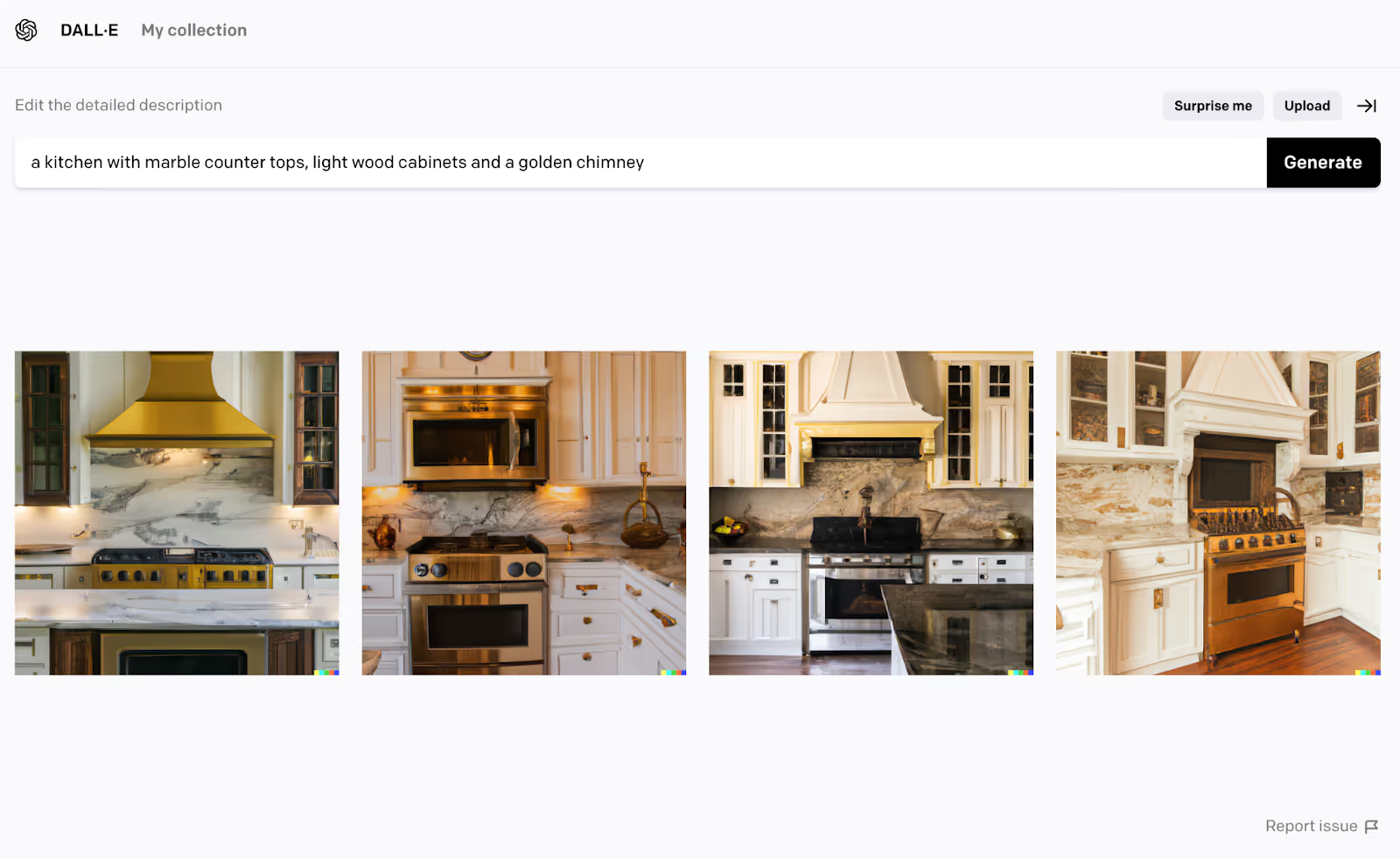
Conclusion
So will Dall-E ever replace Architects?
Dall-E democratizes design generation and allows you and your client to reach accurate decisions quickly.
Dall-E is scarily good, and AI is replacing jobs and industries worldwide. But Architecture & Design are relatively safe. We don’t see Dall-E ever designing something as complex as an airport or winning a Pulitzer prize. Nor can it translate ideas the way legends like Norman Foster or Frank Ghery can.
What separates us from AI is empathy. As humans, we share a universal connection that helps add personality to the things we design. While Architects can still benefit from AI, we’re confident that they won’t replace them. Unless, of course, AI becomes sentient and creates a Matrix.
